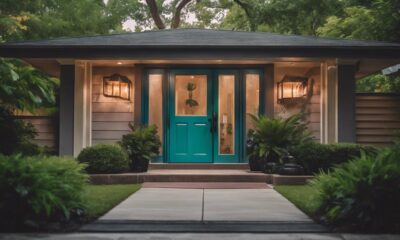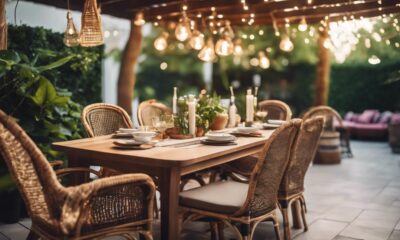Tips and Tricks
Coffee Business: How to Apply for a Coffee Shop License!
Kickstart your coffee shop dream by learning the essential steps to secure a license and thrive in the competitive coffee business world!
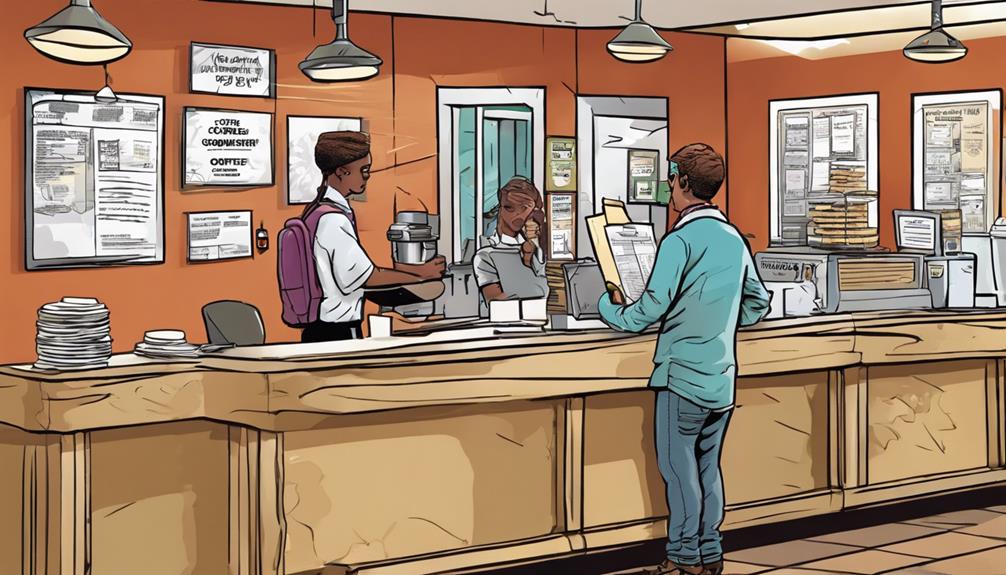
In order to apply for a coffee shop license, you should start by establishing a legal entity and obtaining necessary permits such as business and health permits. Make sure to secure essential insurance coverage for liability and workers’ compensation. Carefully plan your finances, including budgeting for startup costs and ongoing expenses. Use business tools for insights and connect with other coffee shop owners. Take note of the dynamic coffee market and growing opportunities in small cities. Utilize business support programs and industry expertise. By mastering these steps, you will be on the right path to a successful coffee business. Explore how to excel in each crucial stage step by step. Also, consider improving your skills in coffee roasting techniques to set your shop apart from competitors. Enhancing your knowledge and offering unique blends can help attract a loyal customer base. Participate in barista competitions and events to showcase your expertise and love for coffee. By focusing on quality and innovation, you can differentiate yourself in the market and establish a thriving business. To elevate the customer experience, think about offering specialty drinks and organizing educational events on coffee brewing and tasting. It is important to create a welcoming and comfortable atmosphere for patrons to relax and enjoy their beverages. Additionally, think about collaborating with local businesses and organizations to expand your reach and support the community. Remember, business success is not only about profits, but also about making a positive impact on people’s lives. Finally, prioritize your own well-being by following important dental care tips and maintaining a healthy work-life balance as a business owner.
Key Takeaways
- Register legal entity, obtain EIN, and DBA name.
- Acquire Health Department and Building/Zoning permits.
- Understand specific permit requirements in your area.
- Secure general liability insurance and workers' compensation.
- Budget for startup costs, ongoing expenses, and inventory.
Legal Entity Setup
Before you can apply for a coffee shop license, you must establish a legal entity for your business. Registering with the Secretary of State's office is important as it determines the legal structure of your coffee shop. Once your legal entity is established, you can then apply for the necessary permits and licenses required to operate a coffee shop. It is important to familiarize yourself with local regulations and zoning laws as they may impact your ability to open and run a coffee shop. Additionally, it’s important to consider budgeting tips for coffee shop start-ups, such as carefully managing inventory and finding cost-effective suppliers.
This step also involves obtaining a Doing Business As (DBA) name, which is essential for branding and identity purposes. To guarantee compliance with tax regulations and employment laws, acquiring an Employer Identification Number (EIN) is necessary.
Moreover, obtaining Health Department permits and Building/Zoning permits is crucial for the legal operation and safety of your coffee shop. These permits demonstrate that your business meets the required health and safety standards set by the authorities.
Permit Acquisition Process
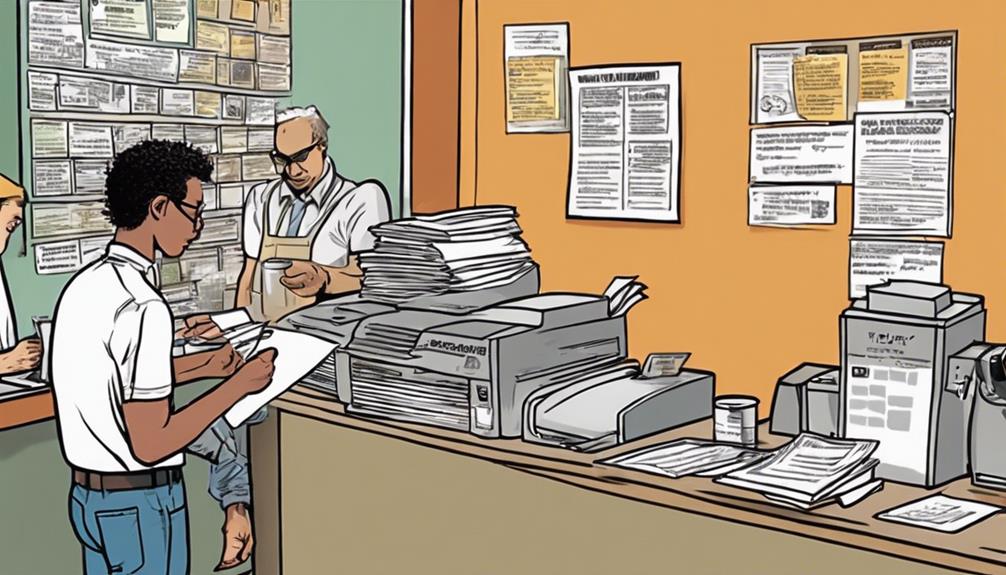
How can you efficiently navigate the permit acquisition process for your coffee shop?
To successfully obtain the necessary permits and licenses, including a business license, food handlers permit, health permit, and potentially a liquor license, it's vital to understand the permit requirements specific to your area.
Each permit has its own application process, fees, and renewal requirements that must be met to guarantee compliance with state laws and regulations.
Researching and familiarizing yourself with the permit acquisition process will help streamline the application procedures and prevent any delays in opening your coffee shop.
Remember to pay close attention to the renewal requirements for each permit to maintain your business's legality.
Insurance Requirements
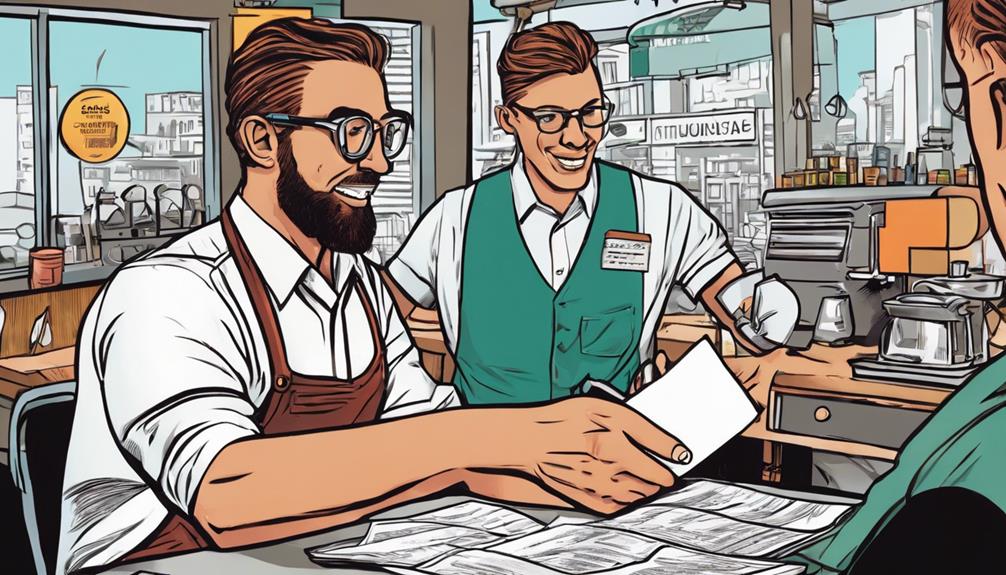
To protect your coffee shop's operations and assets effectively, it's vital to understand and comply with the necessary insurance requirements. When applying for a coffee shop license in Texas, you must make sure you have the appropriate coverage in place.
General liability insurance is essential to safeguard your coffee shop from potential lawsuits arising from injuries or property damage on your premises. Business property insurance is crucial for protecting your physical assets such as equipment, furniture, and inventory.
In Texas, workers compensation insurance is obligatory to cover medical expenses and lost wages for employees injured while on the job. If your coffee shop uses vehicles for business purposes, obtaining commercial auto coverage is essential.
Additionally, state-mandated insurance may have specific requirements based on the location and nature of your coffee shop. By meeting these insurance requirements, you can run your coffee business with confidence and peace of mind.
Financial Planning Tips

When planning for your coffee shop license, remember to carefully budget for startup costs, including permits, equipment, and inventory.
Consider ongoing expenses like rent, utilities, and payroll to guarantee you have a clear financial picture.
Creating detailed projections and seeking financial advice will help you make informed decisions for a successful coffee shop venture.
Budgeting for Startup Costs
Calculating your coffee shop's startup costs involves considering various expenses such as equipment, permits, licenses, insurance, and initial inventory. To start, develop a detailed budget outlining both one-time costs and ongoing expenses for at least the first year of operation.
Research average costs for permits, licenses, and insurance in Texas to accurately estimate your financial needs. Don't forget to factor in unexpected expenses and include a contingency fund in your budget to avoid financial strain.
It's advisable to seek guidance from financial advisors or business mentors to ensure that your budget is all-encompassing and realistic. By carefully budgeting for your startup costs and accounting for potential unforeseen expenses, you can set your coffee shop on the path to financial success.
Financial Projections and Analysis
Conduct comprehensive market research to accurately determine potential revenue streams and expenses for your coffee shop's financial projections. Utilize tools like Excel spreadsheets or financial software to create detailed financial forecasts based on historical data and industry trends.
Consider factors such as location, competition, pricing strategy, and operating costs when developing your financial projections. Regularly review and adjust your financial projections to reflect any changes in the market, expenses, or revenue streams.
Seek guidance from financial advisors or industry experts to guarantee your financial planning aligns with your business goals and objectives. By staying informed about industry trends and analyzing your financial data effectively, you can make informed decisions to optimize your coffee shop's performance.
Remember that accurate financial forecasting is essential for the long-term success and sustainability of your business, so invest time and effort into this aspect of your business planning.
Business Tools and Resources

Discover valuable resources and insights from industry professionals to assist you in maneuvering through the process of applying for a coffee shop license. Here are some essential business tools and resources to aid you in this journey: You can benefit from industry-specific guides on business plan development and finding the perfect location for your coffee shop. In addition, engaging with experienced coffee shop owners can provide valuable advice and mentorship as you prepare to become a coffee shop owner. Leveraging these resources can help ensure a smooth and successful journey towards obtaining your coffee shop license.
- Utilize the Restaurant Opening Calculator for financial insights and planning your budget for application fees.
- Subscribe to On the Line for industry intel, advice, and tools to stay informed about licensing requirements.
- Explore restaurant floor plan templates to optimize your space and ensure adherence to regulations.
- Stay updated on restaurant challenges and trends to adapt your business strategy accordingly.
- Join industry forums or networks to connect with other coffee shop owners and gain valuable insights into the licensing process.
Market Potential Insights
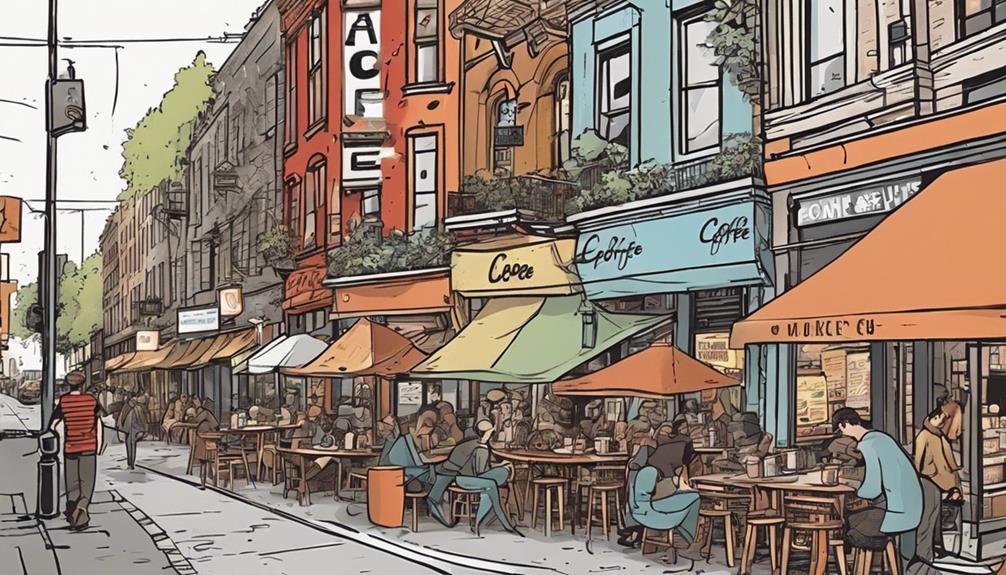
You should consider the untapped potential of the Texas coffee market, with its low ranking in coffee shops per capita and high coffee consumption rates.
Small cities in Texas present unique opportunities for establishing independent coffee shops, given the limited presence of major coffee chains.
Insights into the business environment in Texas reveal a thriving economy and a diverse population that appreciates a vibrant coffee culture, making it an ideal place to start and expand your coffee shop business.
Texas Coffee Market
Texas presents a promising opportunity for the coffee shop industry, given its current ranking and consumer habits. Despite being 42nd in coffee shops per capita in the United States, Texas has less than eight major coffee chain locations per 100,000 residents, indicating a market gap for independent coffee shop owners.
With over 62% of Americans drinking an average of three cups of coffee daily, the state's vibrant coffee culture offers a conducive environment for small businesses to thrive. Additionally, Texas state laws governing health, licenses, and permits for food establishments are structured to support small coffee shop owners.
Small Texas cities, in particular, present untapped potential for local coffee shops, as they often lack designated gathering places for coffee enthusiasts.
Small City Opportunities
With a significant lack of local gathering spots for coffee enthusiasts, small cities and towns in Texas offer a prime opportunity for aspiring coffee shop owners to tap into a burgeoning market. In Texas, the low ranking of 42nd in coffee shops per capita indicates a potential market gap waiting to be filled.
Small communities in Texas are underserved when it comes to local gathering places, presenting an ideal environment for independent coffee shops to thrive. The statistics show that there are less than eight major coffee chain locations per 100,000 residents in Texas, signaling room for new coffee shops to enter the market successfully.
Considering that over 62% of Americans consume an average of three cups of coffee daily, the demand for coffee in Texas is evident. Starting a coffee shop in these small Texas communities could lead to success with proper planning and execution, catering to the needs of the local population and filling the void of community-centric coffee spots.
Business Environment Insights
In the vibrant coffee market of Texas, understanding the business environment insights is essential for aspiring coffee shop owners seeking to tap into the market potential.
Texas boasts a vibrant coffee culture with high demand for coffee, especially in small cities and towns where there's a lack of local gathering places. This presents a golden opportunity for independent coffee shops to thrive and become community hubs.
Additionally, Texas offers a business-friendly environment with a robust economy, making it an ideal location for starting a coffee business. Despite ranking 42nd in coffee shops per capita, Texas still has room for growth in its coffee market, indicating untapped potential for new ventures.
Aspiring coffee shop owners should leverage these insights to carve out a niche in the Texan coffee scene and cater to the diverse tastes of the local population.
Small City Opportunities
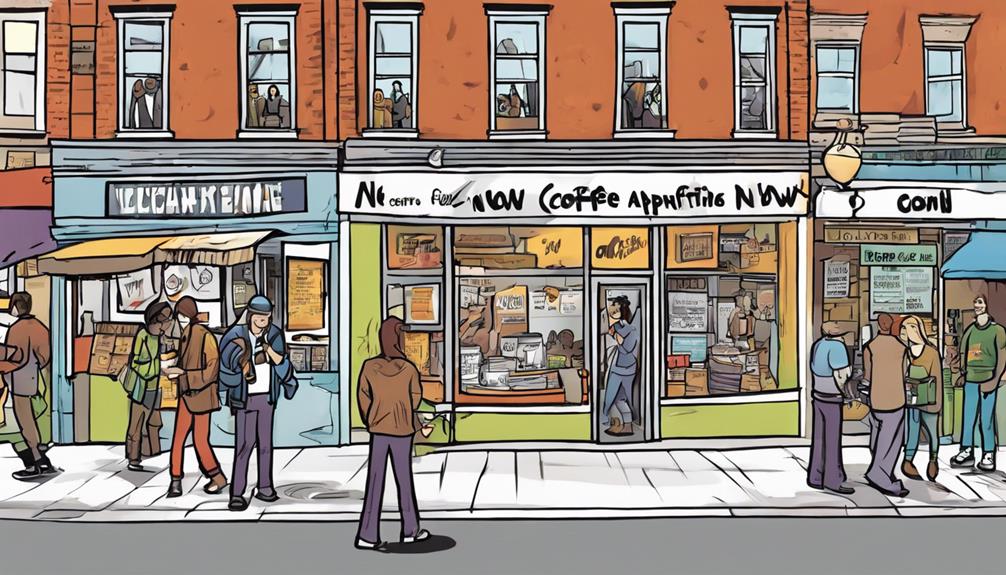
Exploring opportunities in small cities can provide a unique advantage for aspiring coffee shop owners. Texas small cities present a fertile ground for independent coffee businesses, especially in underserved communities where the demand for local gathering places is high. By tapping into this niche market, you can establish a strong community connection and build a loyal customer base.
The intimate setting of small towns allows for a more personalized experience, fostering a sense of belonging that can turn your coffee shop into a beloved local establishment.
In these Texas small cities, the local market is often untapped, offering room for growth and innovation in the coffee industry. The absence of major metropolitan competition provides a space for independent coffee shops to thrive and carve out a unique identity.
Embracing the charm of small-town living and focusing on creating a welcoming atmosphere can set your coffee shop apart and solidify its place within the community.
Business Support and Testimonials

Crimson Cup's all-encompassing support program offers invaluable assistance to coffee shop owners looking to establish and grow their businesses in Texas. Texas coffee shop owners highly recommend Crimson Cup's support program for starting and expanding independent coffee shops.
Here are five key aspects of Crimson Cup's business support and testimonials:
- Comprehensive Support: Crimson Cup provides support from concept to opening day, ensuring all aspects of running a profitable coffee shop are covered.
- 7 Steps to Success Program: This program guides coffee shop owners through the essential steps needed to succeed in the industry.
- Award-Winning Coffee: Crimson Cup offers top-quality, award-winning coffee to enhance the coffee shop's offerings.
- Equipment and Supplies: Crimson Cup provides high-quality equipment and supplies to meet the needs of independent coffee shops.
- Testimonials: Texas coffee shop owners highlight the value of Crimson Cup's products and support in their testimonials, showcasing the effectiveness of the program in helping businesses thrive.
Frequently Asked Questions
Do You Need a Permit to Sell Coffee in Texas?
Yes, you need a permit to sell coffee in Texas. The Health Department issues permits for food establishments like coffee shops to guarantee compliance with health regulations. Make certain to obtain the necessary permits before selling coffee.
How Much Does It Cost to Start a Small Coffee Business?
Starting a small coffee business can range from $20,000 to $80,000, covering equipment, permits, rent, and more. To accurately estimate costs, create a detailed budget that considers factors like shop size and location.
How Do You Become a Coffee Shop Cafe?
To become a coffee shop cafe, establish a legal entity, secure necessary permits, and create a solid business plan. Apply for licenses like a business license and food handlers permit. Guarantee compliance with health regulations and consider insurance coverage. Budgeting for a coffee shop is essential in order to manage expenses such as rent, utilities, and inventory. Consider creating a detailed budget that takes into account both fixed and variable costs, as well as projected sales and revenue. This will help you set financial targets and track your progress towards achieving them.
What Business Class Is a Coffee Shop?
To determine the business class of a coffee shop, consider the specific services offered, like food items and specialty drinks. This classification is important for obtaining the right licenses and permits as per state regulations.
Conclusion
To summarize, starting a coffee business can be a rewarding venture with the right preparation and support.
For example, Sarah opened her own coffee shop in a small town and quickly became a local favorite, thanks to her unique blend of coffee and cozy atmosphere.
By following the steps outlined in this article, you too can turn your passion for coffee into a successful business.
Good luck on your entrepreneurial journey!
Tips and Tricks
Storage Solution: How to Build a Coffee Table With Storage!
Solve your storage struggles with a stylish coffee table that offers hidden compartments – discover how to build one with this guide!
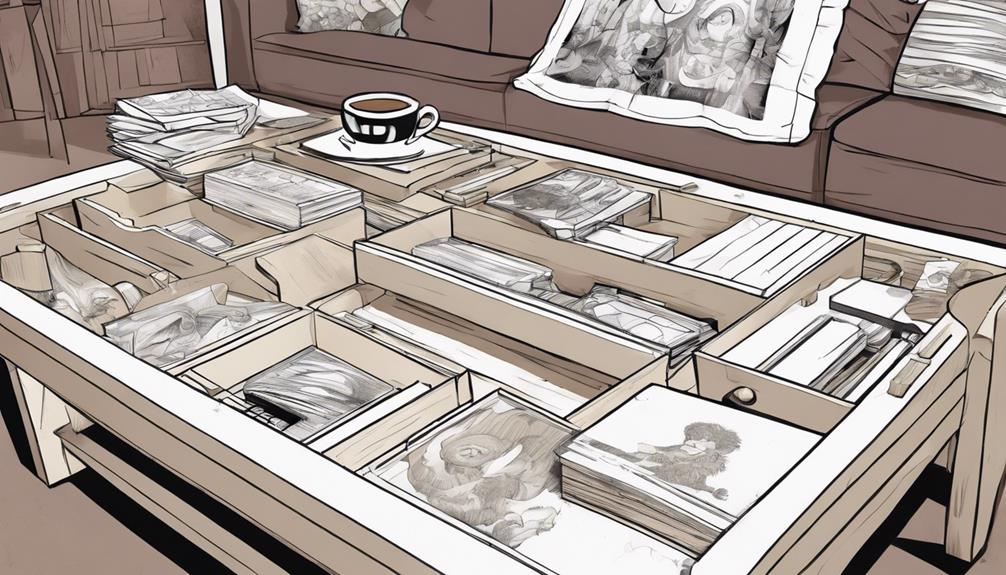
Create a functional coffee table with hidden storage using knotty alder wood and pocket holes for a modern appearance. Incorporate drawer slides for added convenience that optimizes space and elevates the style of your living room.
Key Takeaways
- Utilize knotty alder wood for a rustic look.
- Incorporate drawers with pocket screws for storage.
- Ensure structural integrity with pocket hole joinery.
- Consider dimensions to fit your living space.
- Finish with paint or stain for a personalized touch.
Materials and Preparation
Gather the 4/4 and 6/4 knotty alder wood for building your coffee table with storage and mill it to the required thickness and dimensions. Guarantee the wood is precisely milled to 3/4 thickness, allowing for a sturdy yet elegant finish for your table.
Cut the panel pieces slightly long to account for any adjustments needed during assembly, ensuring a perfect fit for the storage compartments.
To facilitate easy and secure assembly, drill pocket holes in the wood pieces. These pocket holes won't only simplify the construction process but also provide a clean and seamless look to your finished coffee table.
The use of pocket holes is essential for maintaining the structural integrity of your table while also adding a professional touch to the overall design.
Building Components
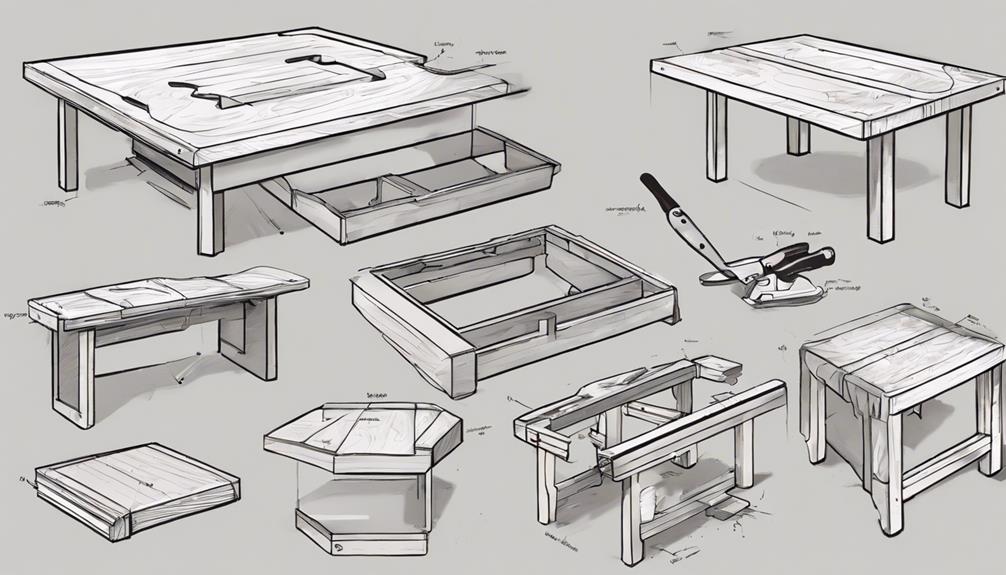
Now, let's talk about constructing the key components of your coffee table.
You'll be working with glued-up boards and pocket holes to build the side panels and shelf, ensuring sturdy assembly.
Securing the side panels to the frame posts and adding bottom supports will provide the necessary stability for your storage coffee table.
Construction Materials
What're the recommended construction materials for building components when constructing a coffee table with storage?
To guarantee a sturdy and functional coffee table, it's suggested to use 4/4 and 6/4 knotty alder wood for the construction materials.
When assembling the pieces, drilling pocket holes in the wood is essential for secure attachment.
To construct the side panels and shelf, make sure to join the pieces with glued edges and pocket screws for added strength.
Additionally, attaching the cross supports to the side panels using a combination of wood glue and pocket screws will enhance the table's durability.
Finally, for the drawers, it's recommended to install them with pocket screws and slides to ensure smooth functionality.
Assembly Techniques
To guarantee a sturdy and functional coffee table, employ proper assembly techniques when building components such as attaching the side panels using bonded edges for strong joints.
Here are some key steps to follow when assembling your coffee table base:
- Bond Edges of Side Panels: Apply wood glue along the edges of the boards before joining them together to ensure a reliable bond that will withstand daily use.
- Utilize Pocket Holes for Shelf Boards: Create pocket holes in the shelf boards to securely attach them to the coffee table base, providing stability and preventing movement over time.
- Secure Legs with Pocket Screws: Use both glue and pocket screws to attach the legs to the cross supports, reinforcing the structure and enhancing the table's overall strength.
Installation Process
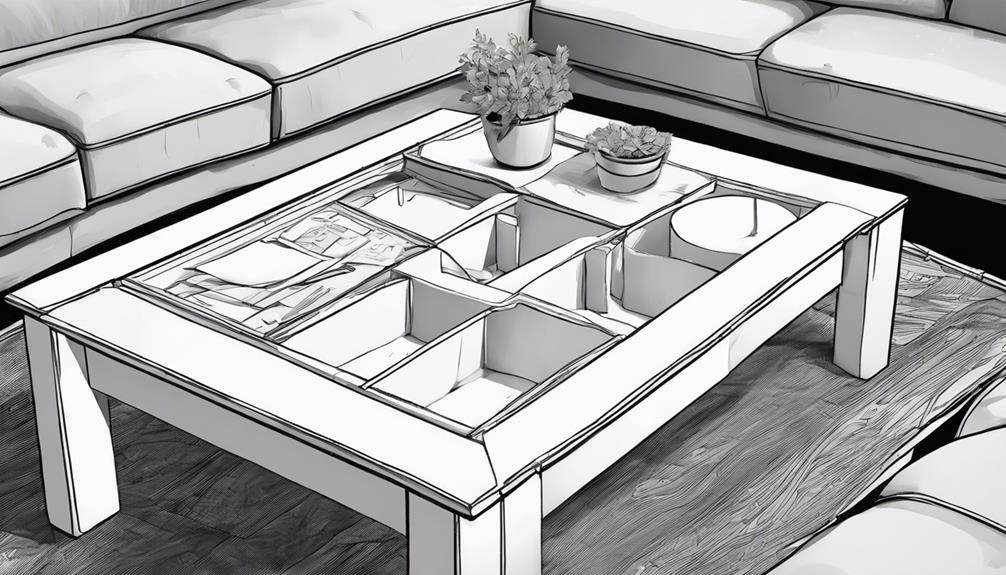
To start the installation process, you'll need to drill pocket holes in the shelf ends to guarantee a secure fit.
Next, glue and clamp the shelf in place for added stability before attaching it securely with pocket screws for support.
Additionally, installing aprons at the base of the table will provide extra structure, while ripping plywood for drawer construction will help maximize storage space.
Assembly Steps Overview
Wondering how to effectively install the components of your coffee table with storage? Here's an overview of the assembly steps to guide you through the process:
- Attach the Table Top: Start by securing the table top to the base using brad nails as outlined in the free plans provided. This step forms the foundation of your coffee table.
- Construct and Install Storage Features: Drill pocket holes in the shelf ends, construct drawer boxes with pocket screws, and install drawer slides for convenient access to stored items. Glue and clamp the shelf in place and attach drawer fronts with screws to complete the storage components.
- Final Touches:
Mark positions for shelf installation, apply a protective finish to the coffee table for durability, and clean and polish the surface for a sleek appearance.
Secure all components together to guarantee a polished and functional coffee table with ample storage space.
Functional Storage Design
How can you effectively integrate the functional storage design into your coffee table with storage for best organization and accessibility?
To start, install shelf boards using pocket screws to create compartments within the coffee table, ensuring proper alignment for a sturdy frame.
Attach drawer slides and boxes to allow easy access to hidden storage spaces.
Consider incorporating a swivel top design for convenient access to the compartments.
Enhance the visual appeal by utilizing decorative pole wrap and achieving a smooth finish on your DIY coffee table.
These elements combine to not only offer practical storage solutions but also add a stylish touch to your living space.
Design and Materials
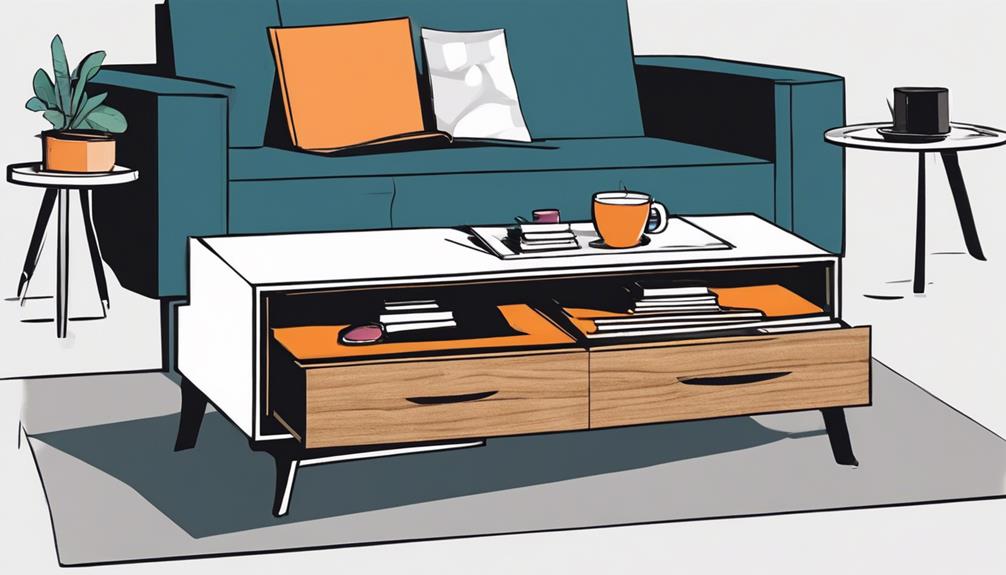
Consider the design and materials carefully when planning to build a coffee table with storage to guarantee that functionality and aesthetics are balanced effectively.
When constructing a Storage Coffee Table, keep the following key aspects in mind:
- Side Panels: Utilize sturdy side panels to provide structural support and enhance the overall design of the table.
- Using 1 1/4 pocket: Incorporate 1 1/4 pocket holes to join the various components securely, ensuring the coffee table's durability and longevity.
- Material Selection: Choose high-quality materials such as wood, metal, or glass to create a visually appealing and functional piece that complements your living room decor seamlessly.
Finishing and Maintenance
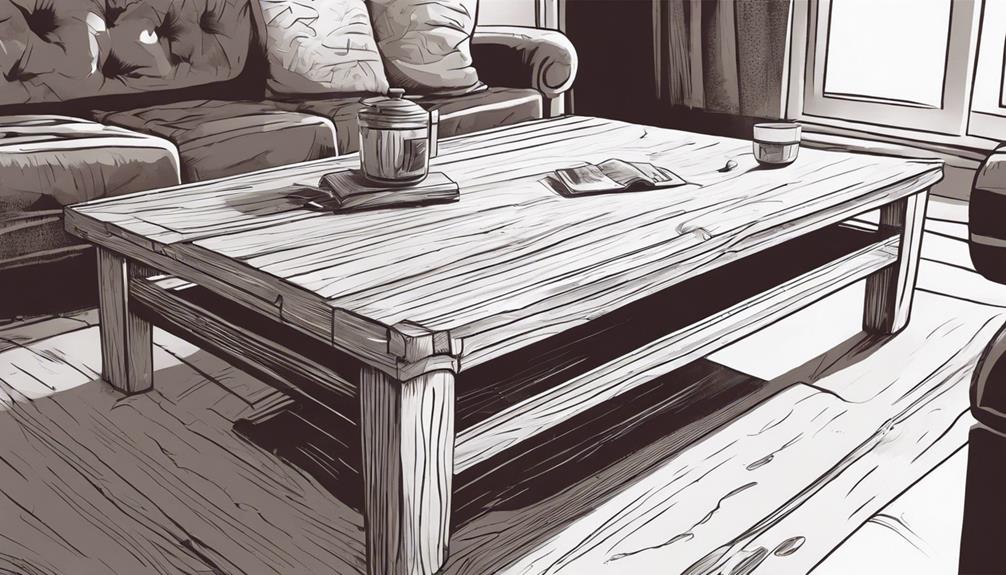
To safeguard the longevity and aesthetic charm of your coffee table with storage, applying a protective finish is essential. A safeguarding finish acts as a barrier against daily wear and tear, spills, and scratches, preserving your table's pristine appearance for years to follow.
Furthermore, establish a routine of cleaning and polishing the surface regularly to uphold its shine and visual allure. This uncomplicated step not only enhances the overall appearance of your coffee table but also aids in preventing the accumulation of dirt.
When it comes to upkeep, employ a gentle sanding technique to keep the table's surface sleek and devoid of flaws. By smoothing any uneven areas or scratches, you'll guarantee a flawless and refined finish.
Keep in mind, a well-preserved coffee table not only enhances the functionality of your living area but also enhances its aesthetic appeal. Therefore, dedicate time to maintain your creation, and it will continue to impress for years to come.
Coffee Table Design With Storage
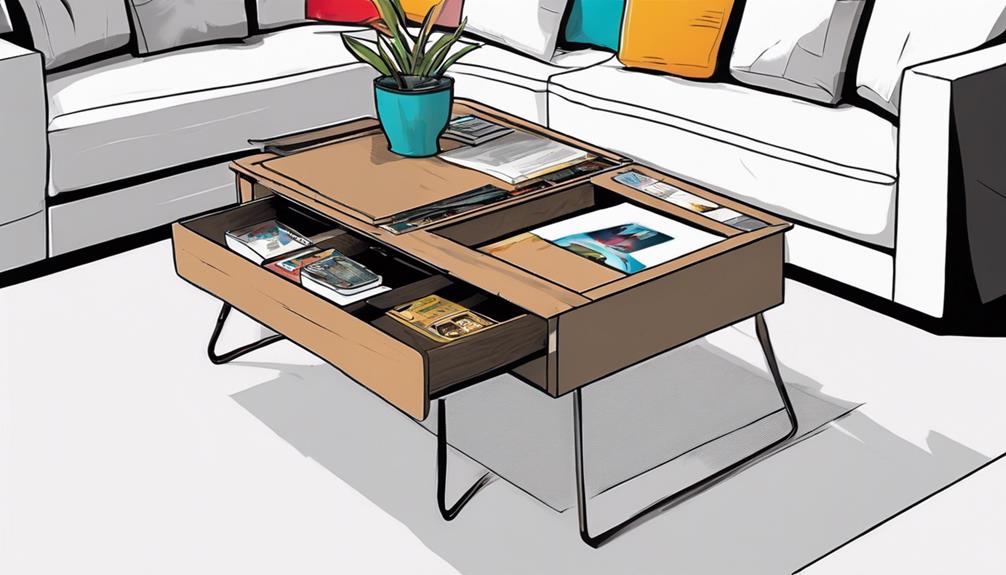
Coffee tables with storage cleverly blend functionality and style, offering a practical solution for organizing items in your living space.
When designing a coffee table with storage, make sure to take into account the following:
- Concealed Compartments: Incorporate concealed compartments or drawers into the design to keep clutter out of sight and maintain a clean look in your living room.
- Easy Accessibility: Ensure that the design allows for easy access to frequently used items, making it convenient to store and retrieve belongings as needed.
- Customization: Personalize the coffee table with storage to fit your decor style and storage needs. You can choose different materials, colors, and sizes to match your existing furniture and enhance the overall aesthetic of the room.
Before starting the construction process, create a detailed cut list to accurately measure and cut the materials needed for your coffee table with storage.
Planning ahead will help you build a functional and stylish piece that enhances both the look and organization of your living space.
Frequently Asked Questions
How to Build a Storage Ottoman Coffee Table?
To build a storage ottoman coffee table, start by creating a sturdy frame, adding padding and upholstery, and incorporating a hinged or removable top. Customize with different fabrics, colors, and sizes to match your home decor and storage needs.
How Do I Keep My Coffee Table Organized?
Keep your coffee table organized by utilizing storage compartments for remote controls, coasters, and magazines. Incorporate drawers for pens and notepads. Use baskets or decorative boxes for loose items. Separate items with dividers or trays and regularly declutter.
What Should Your Coffee Table Match?
To create balance in your living space, your coffee table should match the style and color scheme of your decor. Consider the material and storage options that complement your existing furniture while adding functionality and flair.
How Do You Put a Coffee Table in a Large Room?
In a large room, place your coffee table strategically to anchor the space. Opt for a size that complements the room without overwhelming it. Create balance by using a larger table or multiples for a cohesive look.
Conclusion
To sum up, building a coffee table with storage is a practical and stylish solution for any living space. With the right materials and design, you can create a functional piece of furniture that adds both storage and style to your home.
So why settle for a regular coffee table when you can have one that does double duty? Start building your own storage coffee table today and elevate your living space to the next level!
Tips and Tricks
Hidden Storage: How to Build a Concealment Coffee Table!
Kickstart your DIY journey with a coffee table that conceals hidden storage – discover how to build it step by step!
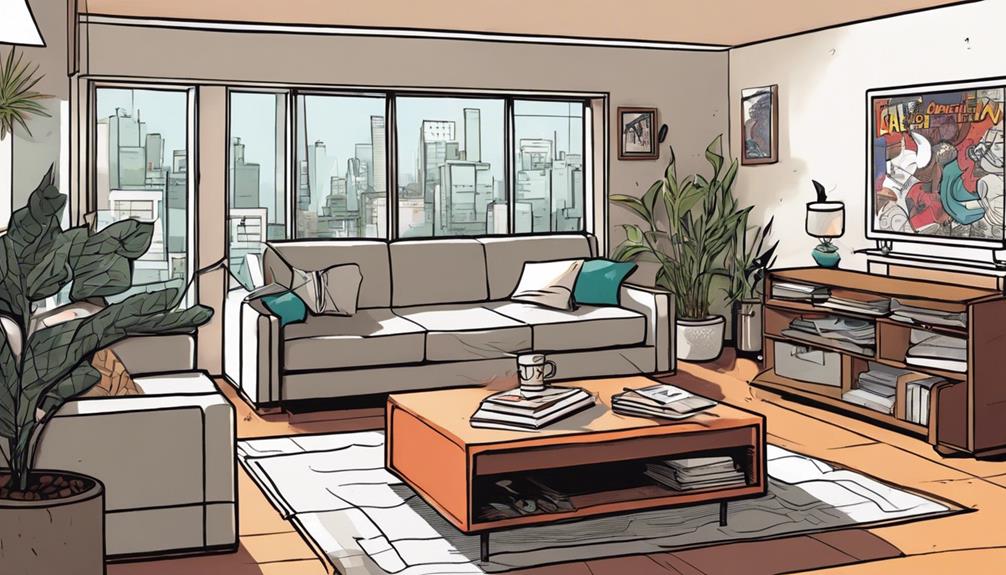
Ready to tackle the challenge of building a secret stash coffee table with **sneaky compartments**? Begin by gathering materials and cutting them precisely to fit. Create sturdy joints using pocket holes and finish with a **rustic look** by painting and staining, sealing with water-based urethane for durability. Incorporate X-shaped braces with **strong connections**, ensuring the table’s stability. Secure the bottom firmly and add shelves for extra storage room. Amp up security with a **fingerprint lock**, and distress the wood for a more refined aesthetic. Fasten the end pieces with screws and test the lock for functionality before showing off your new DIY skills! If you’re up for a fun challenge, this project is perfect for you!
Key Takeaways
- Incorporate a hidden compartment in the coffee table design for discreet storage.
- Secure bottom board and shelf for easy access to the concealed storage area.
- Utilize biometric lock for added security and convenience in accessing hidden compartment.
- Follow precise assembly instructions including half lap joints and pocket holes for stability.
- Ensure smooth tabletop operation with properly installed slides for the hidden compartment.
Material Preparation and Initial Cuts
How do you maintain a square and professional look for your concealment coffee table during material preparation and initial cuts?
To achieve this, ensuring excellent customer service starts with removing the rounded edges of the two by four and two by six materials. By doing so, you lay the foundation for a seamless construction process.
The two by six material is then ripped to a width of five and eight inches, crafting the tabletop, while the two by four material is cut to three inches wide for specific components of the table.
Additionally, square stock material is also prepared for use in constructing the coffee table.
These initial cuts are critical in guaranteeing precise measurements and a polished finish for your project. By prioritizing accuracy and attention to detail in the early stages, you set the stage for a successful build and a satisfied customer.
Assembly and Finishing Techniques
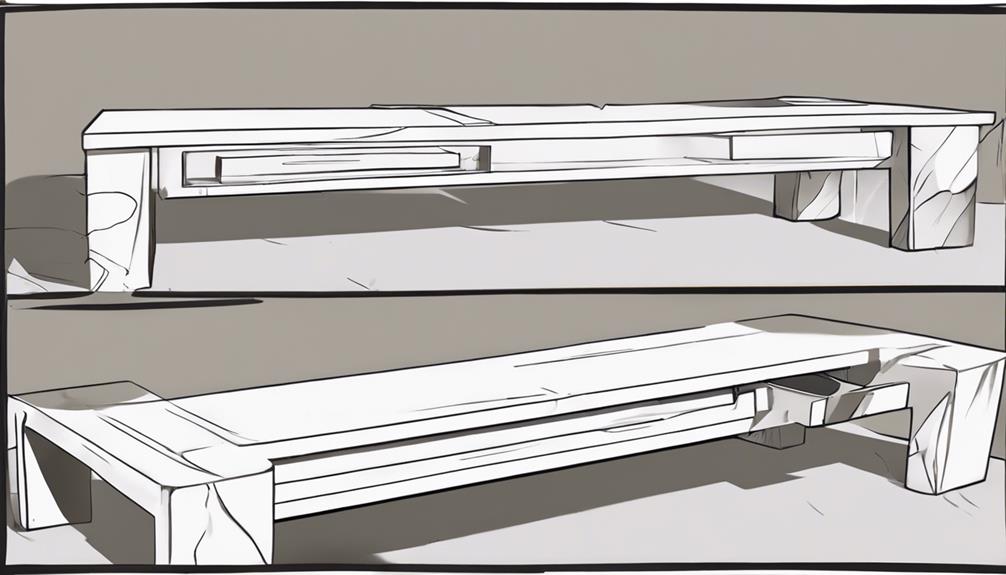
To guarantee a strong and visually attractive end product, use pocket holes for secure joinery when assembling the front and back sections of the X-Frame farmhouse concealment coffee table.
Before staining, apply black spray paint to parts of the table for a weathered look. Once the paint dries, stain the tabletop with Minwax's early American stain.
For a long-lasting finish, coat the tabletop with a water-based urethane to protect against daily wear and tear.
When installing the X braces, incorporate half lap joints and glue for added stability and structural integrity. To make sure everything functions seamlessly, test all components before finalizing the assembly.
Finally, when installing the bottom board and bottom shelf of the concealment coffee table, make sure to secure them properly for easy access and maintenance.
Following these assembly and finishing techniques will result in a beautifully crafted concealment coffee table that meets both aesthetic and functional requirements.
Installation Techniques
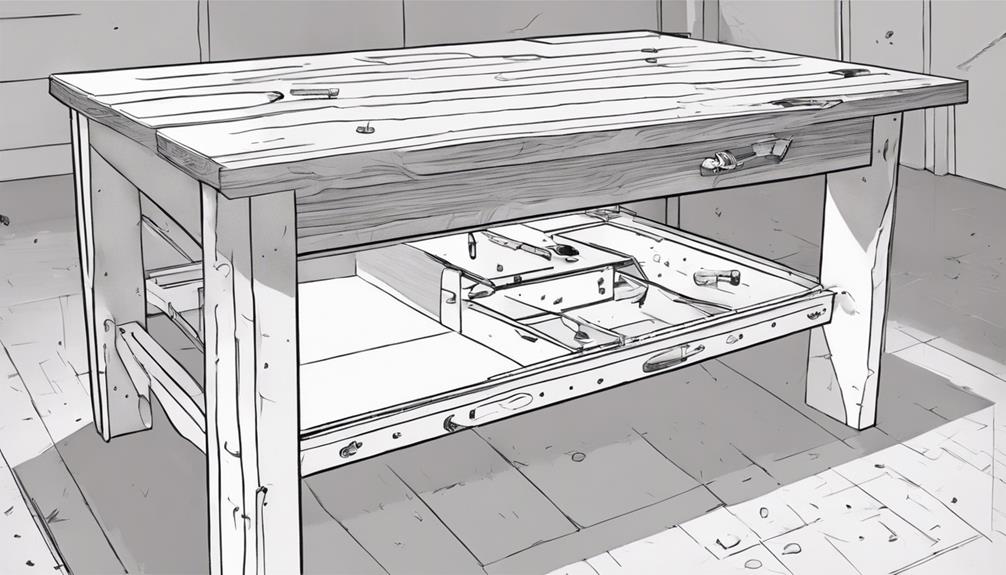
Securely installing the bottom board is necessary to create a functional hidden compartment within the concealment coffee table. When securing the bottom board, you need to make sure it's firmly attached to provide a stable base for the hidden compartment.
To enhance the table's stability and visual appeal, use half lap joints and glue to install the X braces. This method not only reinforces the structure but also adds a touch of elegance to the design.
Proper installation of slides is vital to prevent friction and guarantee the smooth operation of the tabletop when accessing the hidden compartment. Additionally, incorporating a bottom shelf can offer extra storage space, maximizing the functionality of the concealment coffee table.
For added security and convenience, consider installing a biometric lock to safeguard the hidden compartment while allowing easy access. By following these installation techniques carefully, you can create a concealment coffee table that's both practical and stylish.
Final Assembly and Additional Features
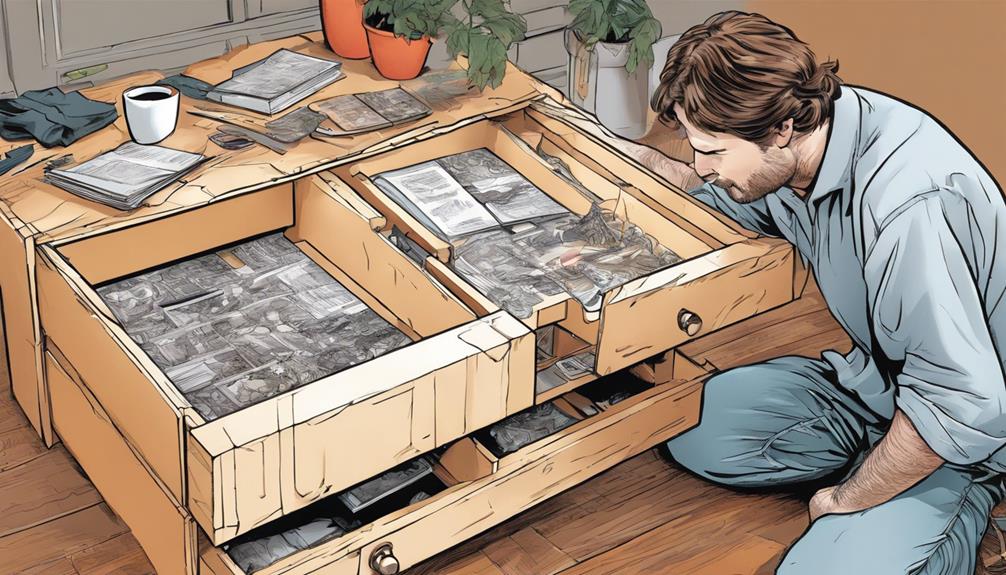
Apply distressing techniques to the painted parts for a weathered appearance before proceeding with the final assembly and incorporation of additional features. Once the distressing is complete, sand the surfaces for a polished finish before moving on to staining the tabletop. Securely install the end boards using screws to ensure stability, and then position the bottom cleat and slide supports to provide adequate support for the tabletop. Test the lock functionality to guarantee proper operation and security for your concealed storage space.
To keep your project within budget and save money, consider repurposing materials or using cost-effective alternatives. Here's a simple cost-saving idea to help you along the way:
| Cost-Saving Idea | Description |
|---|---|
| Upcycle Old Drawer | Repurpose an old drawer as a secret compartment to save money on material costs. |
Building X-Frame Farmhouse Table
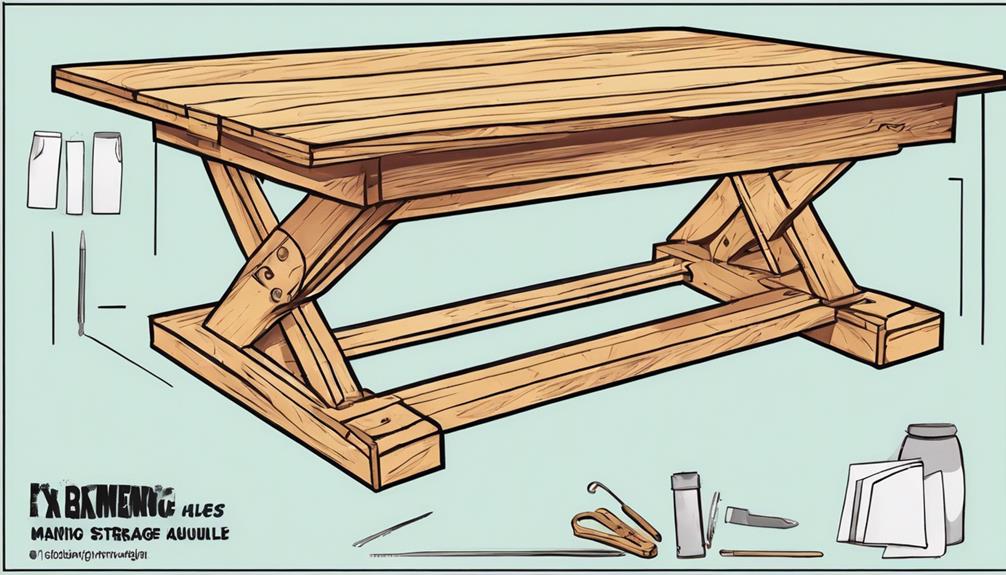
Before starting the construction of the X-Frame Farmhouse Table, make sure you have all the necessary materials and tools ready for the project.
Let's talk about how to build this unique piece. Begin by preparing two by fours and two by sixes, ensuring the rounded edges are removed for a square look. Utilize pocket hole joinery for assembly, creating a sturdy frame for the table.
The video tutorial provides detailed instructions on constructing a regular coffee table with a farmhouse design, offering a twist on traditional style. Remember to refer to the cut list and plans available to guide you through the construction process effectively.
After assembly, consider adding distressing effects with black spray paint, staining the tabletop for a rustic touch, and applying a water-based urethane finish for protection.
Frequently Asked Questions
How to Build a Storage Ottoman Coffee Table?
To build a storage ottoman coffee table, cut plywood to size, attach foam padding and fabric, leaving one side open. Add a hinge for easy access to the storage compartment. Place it on a coffee table base for a functional piece.
How Do You Make a Suitcase Into a Coffee Table?
Turn that old suitcase into a coffee table oasis! Create a flat surface by removing hardware, add legs for stability, top it off with glass for a sleek finish. Customize with paint to match your style.
How to Make a Large Footstool Coffee Table?
To make a large footstool coffee table, secure the footstool to a sturdy base, then add a wood or glass tabletop. Customize it to match your style and incorporate hidden storage for a practical touch.
How Do I Keep My Coffee Table Clutter Free?
To keep your coffee table clutter-free, utilize hidden storage for remote controls and magazines. Incorporate removable trays to organize small items. Designate spots for coasters. Use trays for keys and pens. Regularly declutter to maintain a tidy living space.
Conclusion
Now that you've learned how to build a concealment coffee table, you may be thinking it sounds too complicated.
But don't worry! With the right materials and a little patience, you can easily create a stylish and functional piece of furniture that adds extra storage to your space.
So give it a try and impress your friends with your DIY skills!
Tips and Tricks
Rustic Charm: How to Build a Farmhouse Coffee Table!
A rustic farmhouse coffee table awaits with step-by-step instructions for creating a charming centerpiece – discover the secrets to crafting your own!
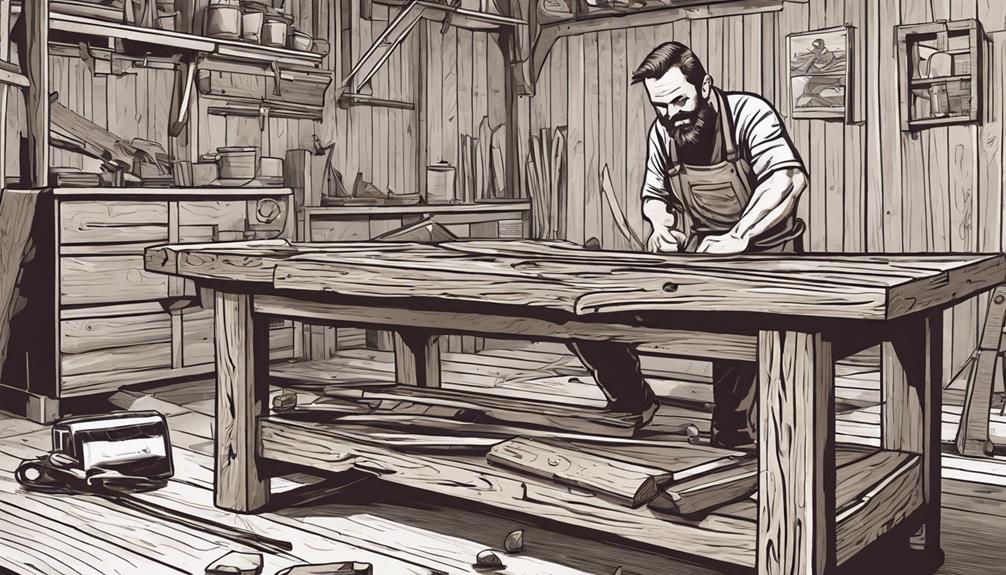
Grab essential tools like a saw, drill, and wood screws, and opt for pine or oak for durability. **Affix the table top** securely with screws, add a bottom shelf, incorporate a storage drawer, and **distress the wood** for a charmingly weathered look. Enhance the table’s appeal by staining it with a variety of colors, and don’t forget to **apply polyurethane** for a gleaming finish. Maintain its beauty by cleaning it regularly and prolong its lifespan by reapplying sealant. Dive into the captivating world of crafting as you create your very own farmhouse coffee table, with additional insights to elevate your journey towards a rustic masterpiece. Explore the joy of building and the satisfaction of creating something truly unique!
Key Takeaways
- Choose pine or oak for durability and use a Kreg Jig for strong joints.
- Distress wood for a weathered look with sanding, denting, and scraping techniques.
- Layer different stain colors for an authentic aged appearance.
- Apply polyurethane sealant for a glossy finish and long-lasting protection.
- Regularly maintain by cleaning, reapplying sealant, and avoiding direct sunlight and heat.
Tools and Supplies Required
Gather the necessary tools and materials needed for building a farmhouse coffee table, including a saw, drill, sandpaper, wood glue, wood screws, wood stain, and polyurethane sealant. To make assembly easier, consider using a Kreg Jig for creating strong joints without visible screws on the tabletop.
When selecting wood stain, opt for a color that complements your decor style and enhances the natural beauty of the wood.
For a farmhouse coffee table, the wood type plays an important role in achieving the desired rustic look. Pine or oak are popular choices due to their durability and aesthetic appeal. To ensure a strong construction, use wood screws of appropriate length and thickness.
When applying the wood stain, consider adding multiple coats for a richer color depth.
Step-by-Step Assembly Instructions
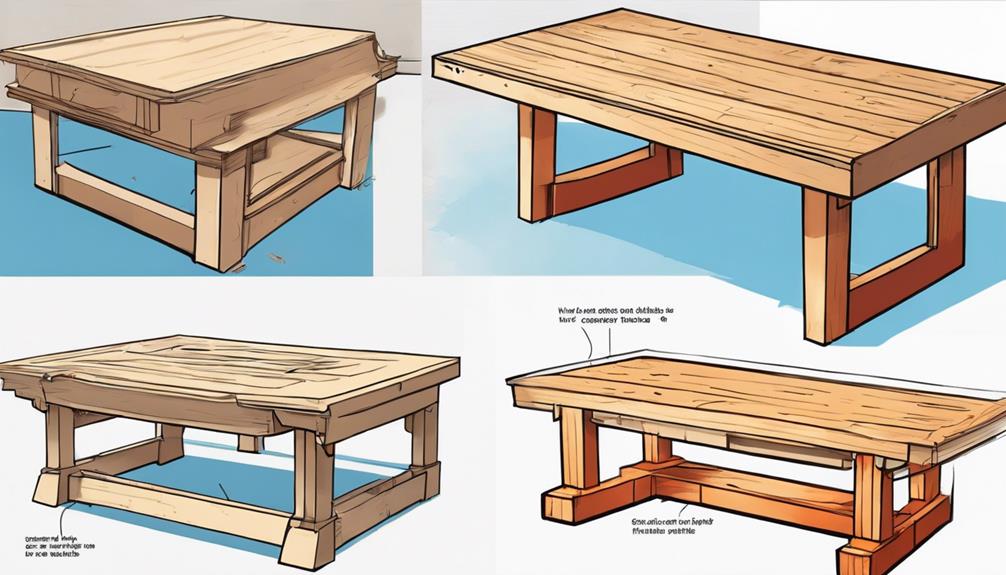
Consider starting the assembly process by sanding and distressing the wood to achieve a rustic appearance before moving on to staining and sealing for a farmhouse coffee table. To efficiently build a farmhouse coffee table with storage space, follow these step-by-step assembly instructions:
| Step | Instructions | Tools Required |
|---|---|---|
| 1 | Attach table top to legs | Drill, Screws |
| 2 | Secure shelf to bottom | Drill, Screws |
| 3 | Join side aprons to legs | Drill, Screws |
| 4 | Install drawer for storage | Drill, Screws |
Distressing and Staining Techniques
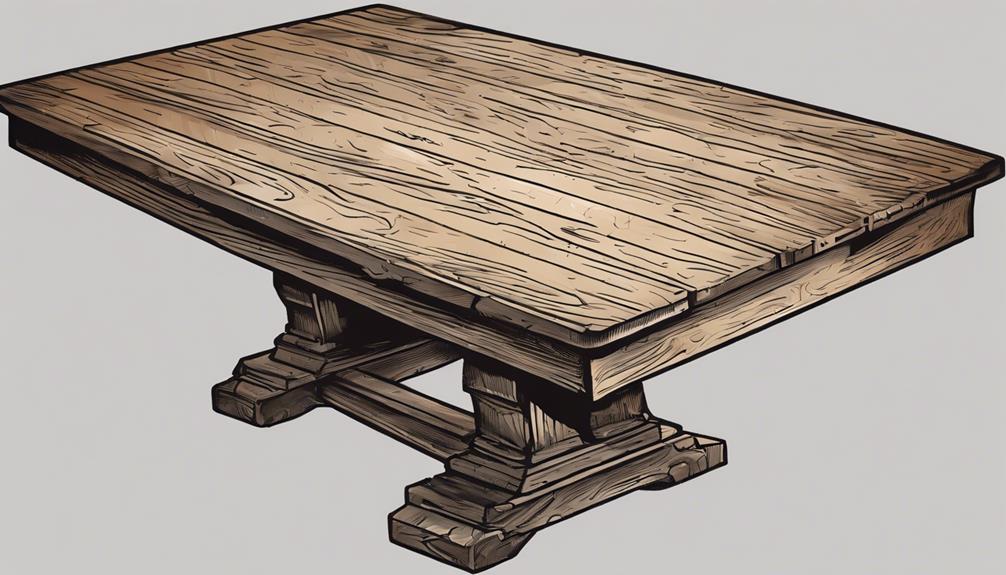
Start distressing and staining the wood to achieve a rustic appearance for your farmhouse coffee table by utilizing techniques such as sanding, denting, and scraping to create a weathered look. Distressing wood involves intentionally aging the surface to give it a worn-out character.
By using tools like sandpaper, chains, or even a hammer, you can add dents, scratches, and imperfections to mimic natural wear and tear. Once the distressing is complete, staining techniques come into play.
Staining wood not only adds color but also enhances the distressed areas, giving them depth and a richer hue. Consider layering different stain colors to create a more authentic aged look on your coffee table.
These techniques can be customized to suit your preferences and achieve the desired level of rustic charm. Remember, after distressing and staining, applying a matte finish sealant will protect the wood while preserving its natural appearance.
Applying Polyurethane Sealant
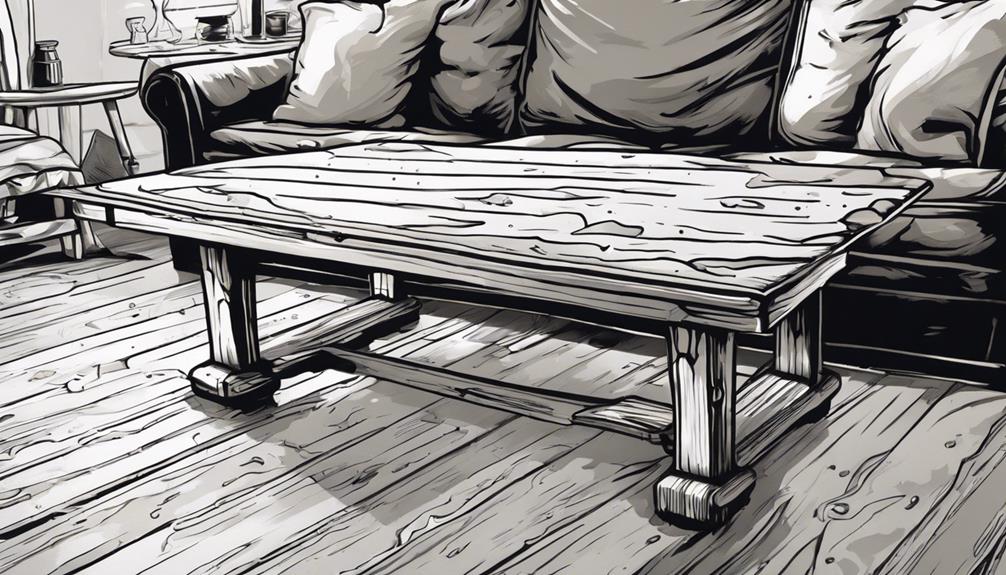
To protect your farmhouse coffee table and enhance its appearance, consider applying a durable polyurethane sealant that provides a glossy finish while safeguarding the wood surface from moisture damage, stains, and scratches.
Start by ensuring the surface is clean and dry before beginning the application process. Apply the polyurethane sealant using a high-quality brush, working in the direction of the wood grain for a smooth finish.
When applying multiple coats, make sure to lightly sand the surface between each coat to remove any imperfections and achieve an even finish. This step is essential for ensuring the polyurethane adheres properly and results in a durable protective layer.
Allow each coat to dry completely before applying the next one to avoid any tackiness or bubbling. The final coat should be left to dry thoroughly to maximize the effectiveness of the sealant and provide a long-lasting, glossy appearance for your farmhouse coffee table.
Maintenance Tips for Longevity
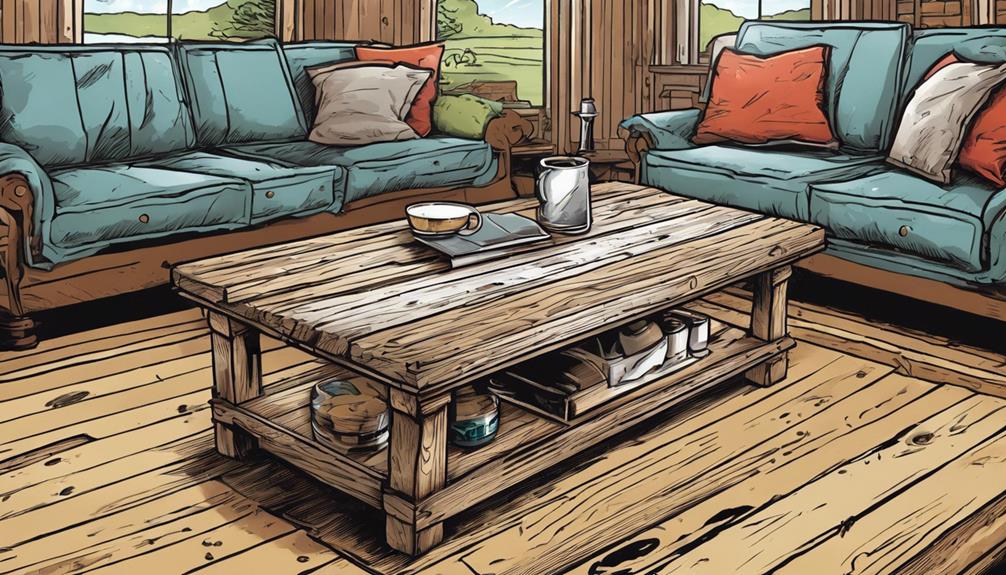
Regularly cleaning your Farmhouse Style Coffee table with a damp cloth is essential for preserving its longevity and charm. Removing dust and debris will help maintain its appearance and prevent premature wear. Remember to reapply a coat of polyurethane sealant every 1-2 years to protect the wood from spills and scratches, ensuring your DIY Farmhouse Coffee table stays in top condition.
When placing items on your new coffee table, be cautious not to place hot objects directly on its surface. Heat can damage the wood, causing unsightly marks. Keep an eye out for any signs of wear and tear, such as scratches or dents, and address them promptly to prevent further damage.
Additionally, it's vital to shield your table from direct sunlight to avoid fading and warping over time. By following these maintenance tips and giving your coffee table the care it deserves, you can enjoy its rustic charm for years to come.
Enjoying Your Finished Coffee Table
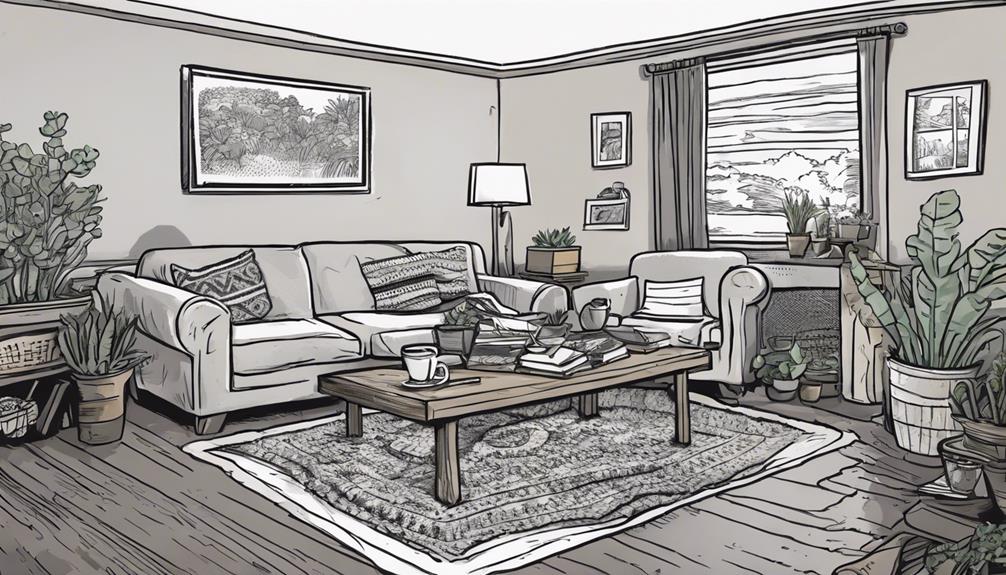
Embrace the sense of accomplishment as you sit back and admire your newly finished farmhouse coffee table. Your hard work has paid off, and now it's time to enjoy the fruits of your labor.
Here are a few ways to fully appreciate your new table in your living room:
- Share the Joy: Snap some photos of your masterpiece and share them on social media. Inspire others to take on DIY projects like this one.
- Functional Design: Notice the holes on each end of the table where you can easily thread cables for a clean and organized look.
- Rustic Charm: Take a moment to appreciate the rustic charm and craftsmanship of the table. Each imperfection adds character and uniqueness.
- Sit Back and Relax: Kick back with a cup of coffee or a good book and revel in the satisfaction of creating something beautiful with your own hands. You'll LOVE to see how it enhances your living space.
Frequently Asked Questions
What Should Your Coffee Table Match?
Your coffee table should match the overall style and color scheme of your living space. When choosing the perfect coffee table that complements your home, it's crucial to take into account existing furniture, room proportions, and durability requirements.
How to Style a Two-Tier Coffee Table?
When styling a two-tier coffee table, mix textures and heights for a visually appealing look. Utilize the lower shelf for baskets, plants, or trays, and the top tier for coffee table books, candles, and personal touches.
What Shape Tray for Rectangular Coffee Table?
For a rectangular coffee table, opt for a rectangular tray to create a cohesive look. Consider the tray's size in relation to the table for balance. Choose a tray that complements the table's style and color for a harmonious design.
How to Make a Coffee Table With Wheels?
To make a coffee table with wheels, start by choosing sturdy wheels that match your table's style. Attach them securely to the legs for easy movement. Just like a trusty steed that carries you forward, let these wheels glide your table effortlessly.
Conclusion
Now that you've completed building your farmhouse coffee table, it's time to sit back, relax, and enjoy the rustic charm it brings to your space.
By following the easy step-by-step instructions and adding your own personal touches through distressing and staining, you've created a beautiful piece of furniture that will last for years to come.
So grab a cup of coffee, put your feet up, and bask in the satisfaction of a job well done!
-

 Espresso2 days ago
Espresso2 days agoEspresso Recipe – How to Brew the Perfect Shot!
-

 Espresso4 weeks ago
Espresso4 weeks agoEspresso Lyrics by Sabrina Carpenter – The Song and Its Meaning!
-

 Espresso2 weeks ago
Espresso2 weeks agoCaffeine in Espresso Vs Coffee – What’S the Difference?
-

 Espresso3 weeks ago
Espresso3 weeks agoEspresso With Milk – Classic Coffee Drinks to Try!
-
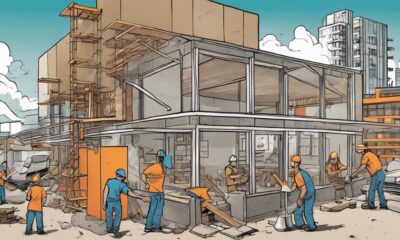
 Tips and Tricks3 weeks ago
Tips and Tricks3 weeks agoCafe Construction: How to Build a Coffee Shop From the Ground Up!
-

 Espresso3 weeks ago
Espresso3 weeks agoWhat Color Is Espresso? The Trendy Shade Explained!
-
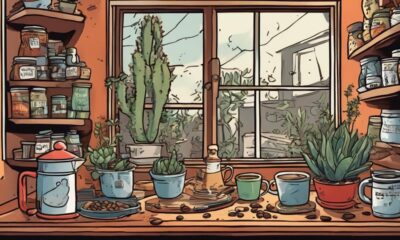
 Tips and Tricks2 weeks ago
Tips and Tricks2 weeks agoDIY Bar: How to Build a Coffee Bar for Your Home!
-
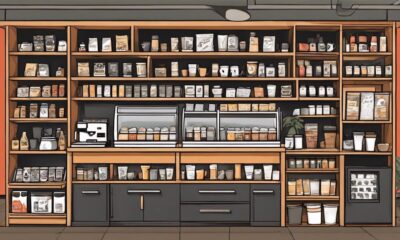
 Tips and Tricks4 weeks ago
Tips and Tricks4 weeks agoCounter Design: How to Build a Coffee Shop Counter for Efficient Service!









